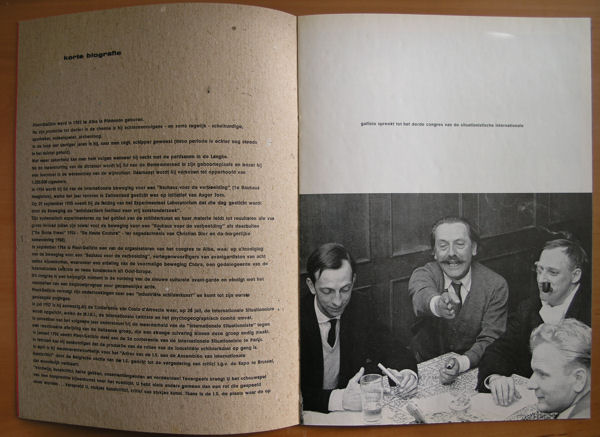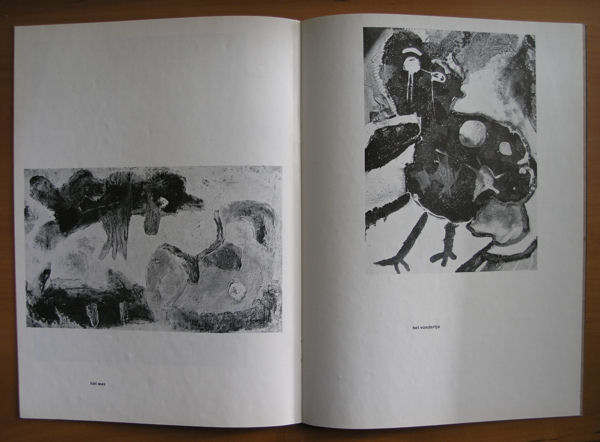
In 1955, at the ripe age of 51, Pinot Gallizio turned his attention to painting after previously immersing himself in archaeology, botany, and studying popular cultures and the phenomenon of nomadism. This particular exhibition showcased a curated selection of his entire body of work, spanning less than a decade. His paintings boast an abstract foundation, executed in a gesture-heavy style that layers thick brushstrokes of oil paint onto the canvas. At times, these clusters of paint coalesce into perplexing symbols, resembling small round eyes or mouths twisted into menacing grins. Many of the pieces feature surreal and ironic titles such as “Death of a Common Traveler” (1955) and “Elliptical Paranoia” (1956).
Gallizio’s bold use of colors and thick, childlike forms were heavily influenced by his collaboration and friendship with Asger Jorn, a prominent member of the CoBrA group. Both men worked in the experimental workshop in Gallizio’s hometown of Alba, where the Italian artist conceptualized and produced his “Industrial Paintings” (1958-59), consisting of canvases over 40 feet in length with heavy impasto and tumultuous colors. Rather than being confined to a frame, each of these canvases could be rolled out in an exhibition space, creating an immersive environment. In fact, some pieces could even be entered as a tunnel, such as “Cavern of the Antimatter” (1958). Gallizio’s search for an alternative to traditional painting and the limitations of the canvas mirrors the works of Lucio Fontana’s “Spatial Environments” (1948-1950) and Yves Klein’s “Architecture of the Air” (1958-1959). As described by Mirella Bandini in a catalogue for Gallizio’s 1974 exhibition in Turin, his art embodied the “ideation of a new culture, in opposition to institutionalized and compartmentalized art.” This movement slowly began to infiltrate the artistic landscape of Turin, aligning with the ideas of the pioneering Arte Povera artists like Mario Merz and Marisa Merz.
www.ftn-books.com has the Gallizio catalog published by the Stedelijk Museum available.

 The inventor of industrial painting? i am not sure, but here follows the text i found on Wikipedia on Gallizio after i sought information on him. He is rather obscure and rarely presented in collections , but in the 60’s the Stedelijk Museum held an exhibition and published an extremely nice catalogue on him. But this artist deserves better because for many he was a source of inspiration and a great influence. he was admired by Jorn, Constant and Debord.
The inventor of industrial painting? i am not sure, but here follows the text i found on Wikipedia on Gallizio after i sought information on him. He is rather obscure and rarely presented in collections , but in the 60’s the Stedelijk Museum held an exhibition and published an extremely nice catalogue on him. But this artist deserves better because for many he was a source of inspiration and a great influence. he was admired by Jorn, Constant and Debord.























































